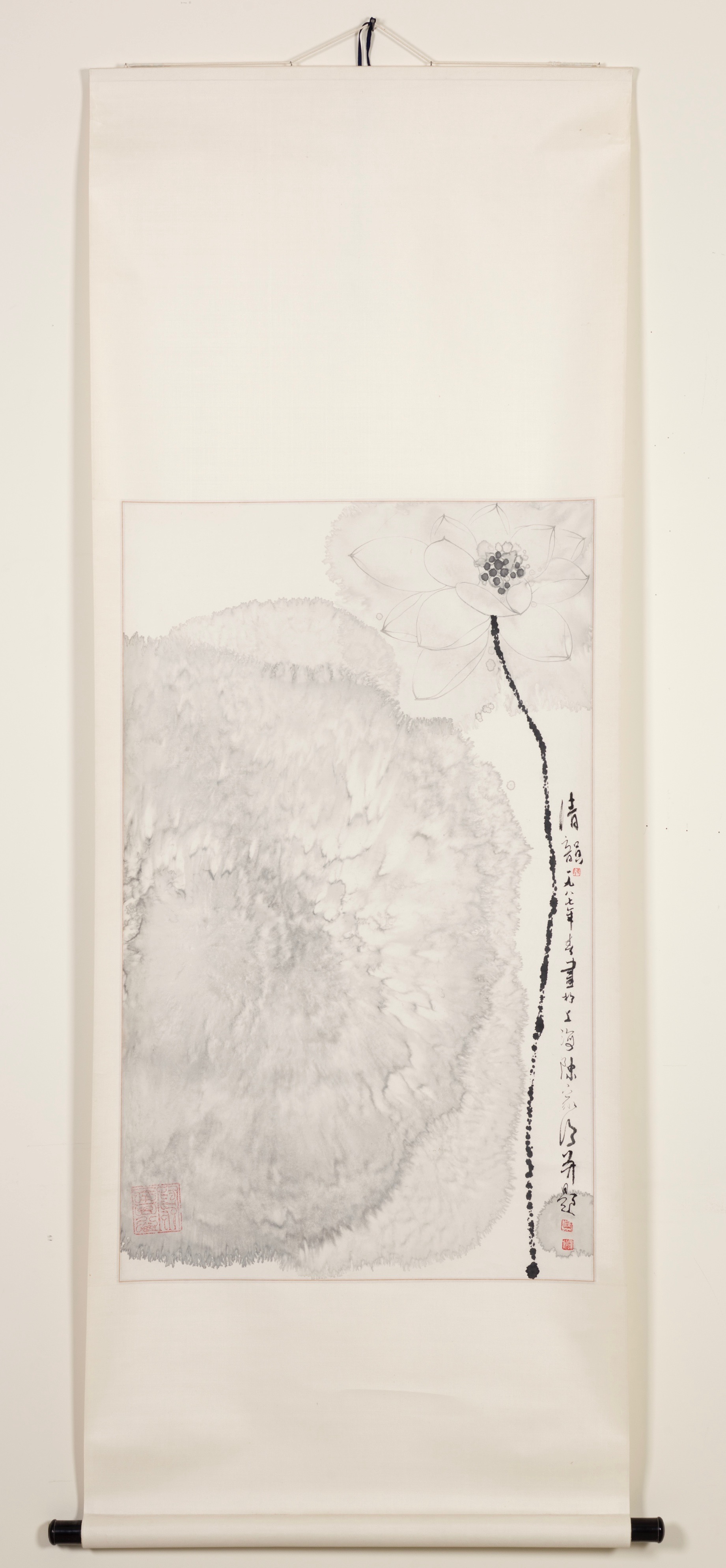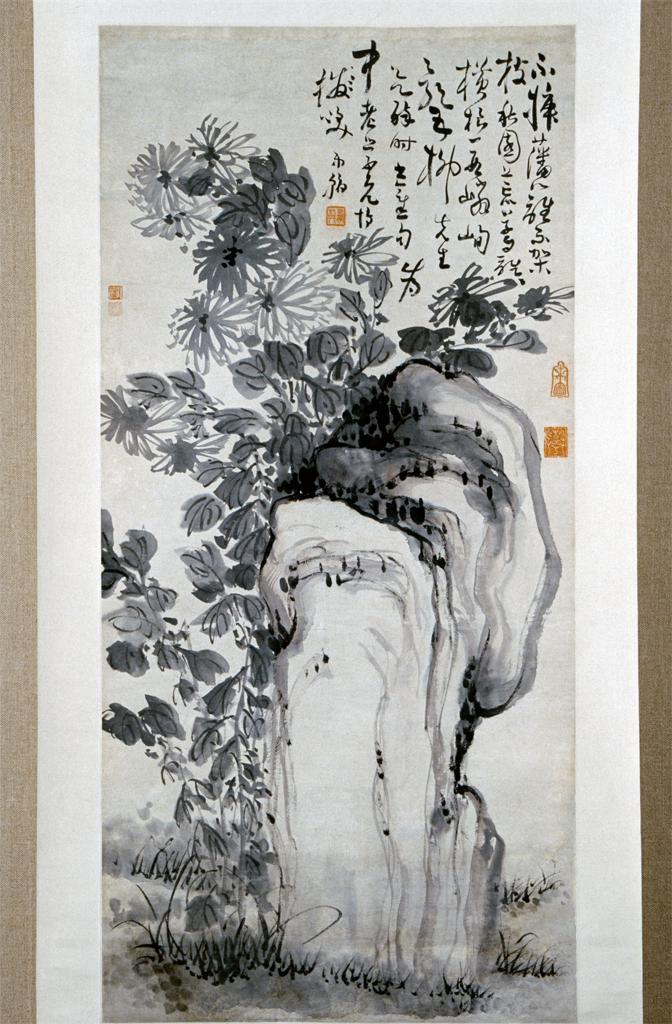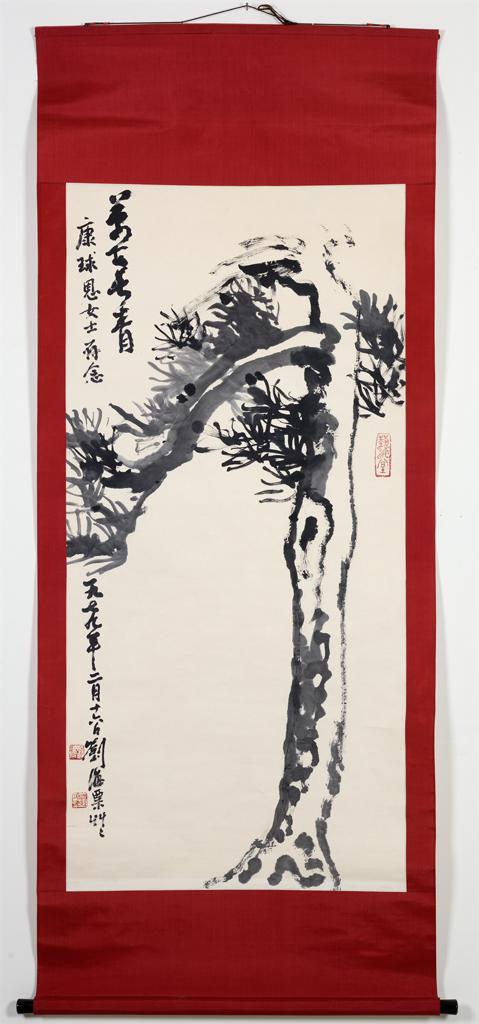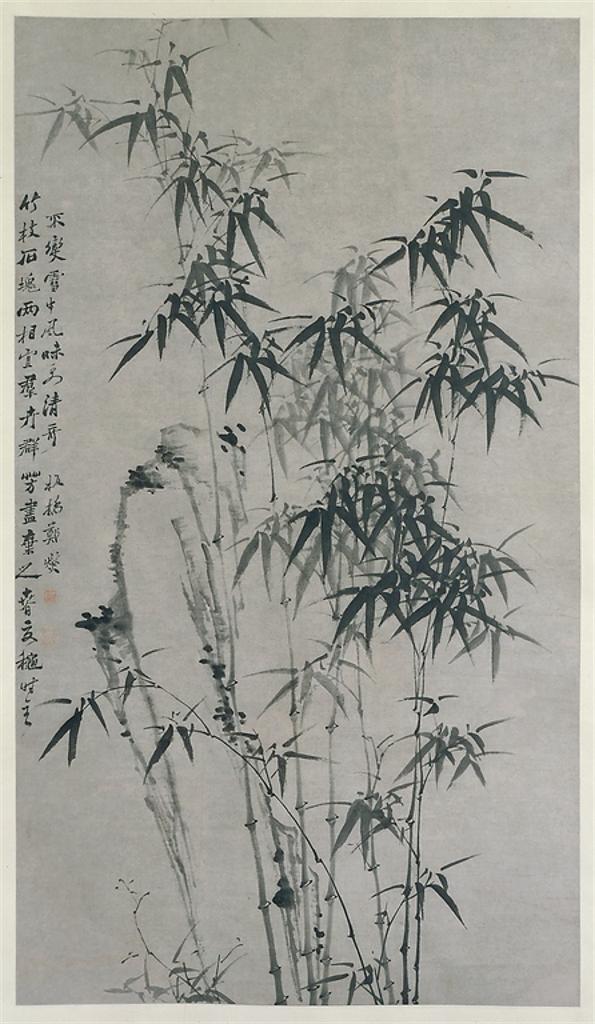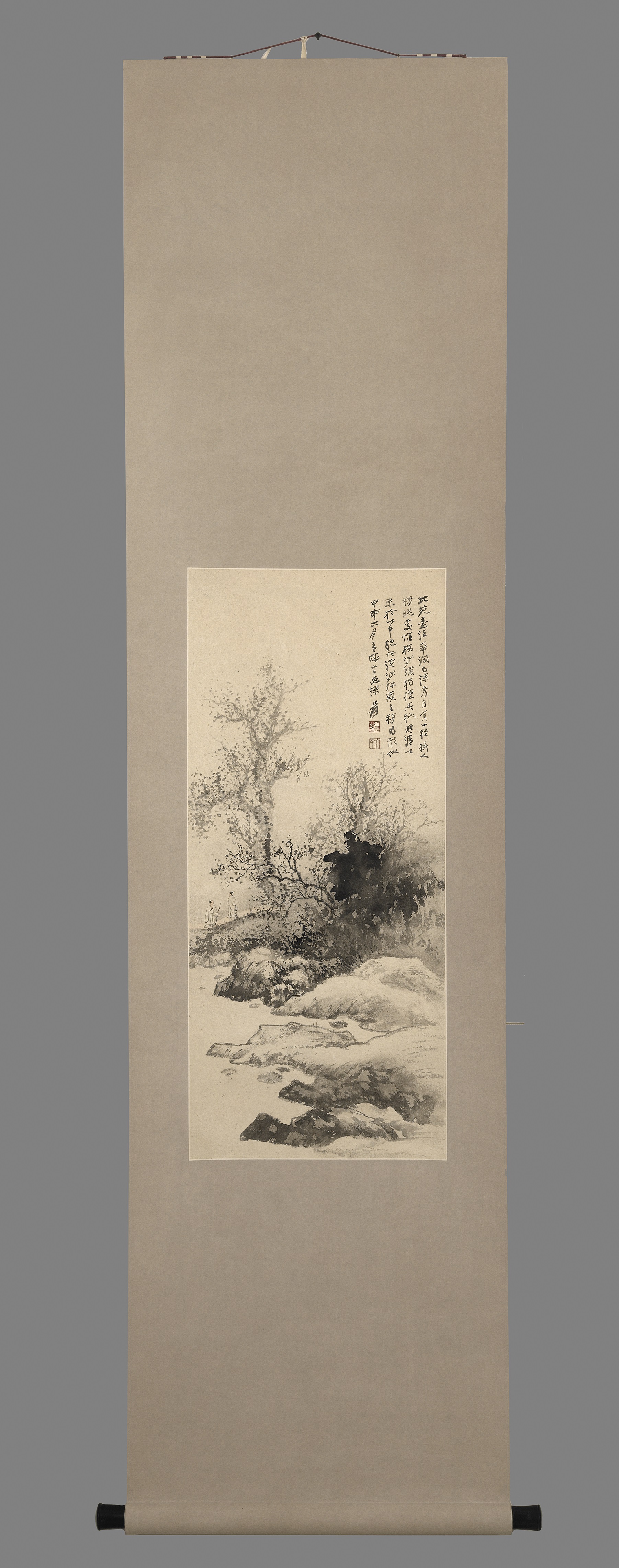Lotuses have the ability to rise from the mud and bloom into beautiful flowers. For this reason, they often represent purity, beauty, and resilience in Chinese artwork. The combination of Chen Jialing’s Lotus painting with Li Bai’s poem The Lotus creates a complementary pairing of images and words.
Born in 1937, Chinese painter Chen Jialing is known for his modern, experimental, and abstract style of painting. His work often integrates a dreamlike world with a simplistic innocence to convey themes of elegance and virtue. The beauty of the lotus illustrated in Chen’s painting is further enhanced by Li Bai’s poem. This well-known Tang-dynasty (618–907) poet spent many years of his life wandering and living a somewhat nomadic lifestyle. Li’s work addresses topics such as voyages, detachment from society, nature, and solitude. Like Chen, Li often experimented with stylistic choices in his poetry.
Chen portrays the flower’s beauty using light washes and fine lines, whereas Li describes the lotus’s radiance and fragrance. This poem-painting interaction evokes a sense of fluidity through the lifelike quality of the lotus leaf and the conversation of the changing seasons in the poem. Additionally, this pairing contrasts the lotus’ strength with its fragility.
Poem selection and label by Beatrice Hesselbart ’20
